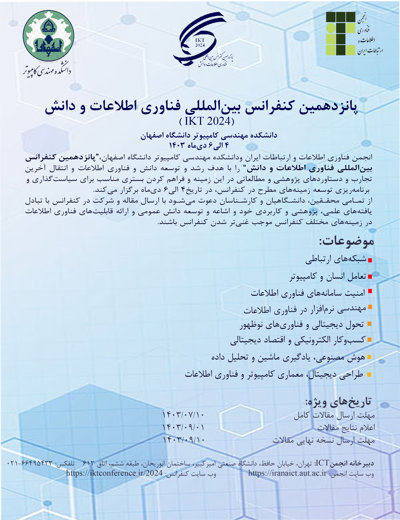0% Complete
Authors :
Keywords :
Abstract :
List of archived papers
مینا طباطبائی - دکتر سعیده ممتازی
Hoda Harati - Farzad Haghighi-Rad - Reza Yousefi Zenouz
طاهره سرزهی - دکتر مهری رجایی طاهره سرزهی - مهری رجایی -
Maryam Raiyat Aliabadi - Dr Mojtaba Vahidi - Dr Ramak Ghavamizadeh
Maryam Karimi - Taghi Javdani Gandomani - Mahdi Mosleh
Shakiba Rajabi - Komeil Moghaddasi
Negin Mashayekhi - Mohammad Reza Reshadinezhad - Shekoofeh Moghimi
راضیه گنجی - دکتر محسن ابراهیمی مقدم - دکتر رامین نوری نیا
Mohammad Ali Poorafsahi - Hamid Mala





